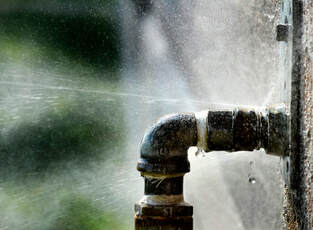Overview To Water Leak Detection At Home
Overview To Water Leak Detection At Home
Blog Article
Were you trying to locate tips on Leaking water lines?

Early discovery of leaking water lines can mitigate a prospective calamity. Aside from conserving you cash, it will certainly lessen the worry as well as irritation. The minute you find a leak, calling your plumber for fixings is the best option. Nonetheless, some tiny water leaks may not show up. If you can not discover it with your nude eyes, below are some hacks that help.
1. Analyze the Water Meter
Every home has a water meter. Inspecting it is a proven way that assists you uncover leakages. For beginners, turn off all the water sources. Ensure no one will flush, use the faucet, shower, run the washing machine or dishwasher. From there, go to the meter and watch if it will change. Because nobody is using it, there ought to be no motions. If it moves, that suggests a fast-moving leakage. If you discover no modifications, wait an hour or two and also examine back again. This implies you may have a sluggish leak that can even be underground.
2. Check Water Consumption
Assess your water expenses and track your water usage. As the one paying it, you need to discover if there are any kind of inconsistencies. If you find sudden changes, in spite of your intake coinciding, it indicates that you have leaks in your plumbing system. Bear in mind, your water bill need to drop under the very same variety on a monthly basis. An abrupt spike in your expense shows a fast-moving leakage.
At the same time, a consistent rise each month, despite having the exact same routines, shows you have a slow-moving leakage that's also slowly rising. Call a plumber to extensively inspect your property, especially if you really feel a warm area on your flooring with piping underneath.
3. Do a Food Coloring Examination
When it comes to water consumption, 30% comes from bathrooms. If the shade somehow infiltrates your bowl during that time without flushing, there's a leakage between the storage tank as well as dish.
4. Asses Exterior Lines
Do not forget to examine your outdoor water lines also. Test spigots by connecting a yard tube. Must water leak out of the link, you have a loosened rubber gasket. Replace this and also guarantee all connections are tight. If you've obtained a sprinkler system, it will certainly help get it properly analyzed and also preserved annually. One small leak can waste lots of water and also surge your water bill.
5. Examine and Evaluate the Situation
House owners need to make it a habit to examine under the sink counters and also also inside cabinets for any bad odor or mold and mildew growth. These two red flags show a leakage so timely attention is required. Doing regular examinations, also bi-annually, can conserve you from a major trouble.
Inspect for stainings and also deteriorating as the majority of pipes as well as appliances have a life expectations. If you believe leaking water lines in your plumbing system, don't wait for it to escalate.
Early discovery of leaking water lines can minimize a potential catastrophe. Some tiny water leaks may not be visible. Inspecting it is a proven method that assists you uncover leakages. One tiny leak can waste tons of water and spike your water bill.
If you suspect dripping water lines in your plumbing system, do not wait for it to intensify.
How to Know If Your Home Has a Hidden Leak
Water Meter Reveals Inexplicable Water Usage
If you’d like to test whether or not there’s a leak somewhere in your home, you can do this using your water meter. Here is how to conduct the test:
Don’t use any water in your home for at least 30 minutes; this also means not turning on faucets or water-using appliances.
Go outside, and check your water meter for activity.
If your water meter shows that there was activity, even though no one was using any water, this proves that there is a leak in your home.Visible Mold or Mildew Growth
Leaks behind walls create moist, dark environments that allow mold and mildew to grow and thrive. Eventually, you might see mold growth forming on the wall closest to a hidden leak.
If mold is growing in an area that receives a high amount of moisture, such as a bathroom, it may simply be an indication that better ventilation is needed. However, if you see mold growth on a wall or the ceiling in an area where you would not expect, you probably have a hidden leak.
Musty, Mildew Odor
Sometimes you might not be able to see the mold or mildew that is growing as a result of a leak. However, the smell can give the problem away just as easily. If you catch a whiff of something musty, there’s a good chance that old water is collecting somewhere in your home that you can’t see.
Stained/Warped Walls, Ceilings, or Floors
When your home soaks up water, a variety of red flags can become visible, including ceiling stains, bubbling drywall, warped walls, and sagging floors. While these issues can be caused by excess humidity, they can also be signs that a pipe or plumbing connection has started leaking behind your walls.
Inexplicably High Water Bill
After a while, you get a general sense for what your water bill should be. If you own a pool or sprinkler system, your bill will tend to be higher during summer. However, if you receive a water bill that seems especially high, and you can’t figure out what caused it, then you may have a hidden leak somewhere that’s increasing your bill.
https://www.plumbingjoint.com/blog/2019/july/how-to-know-if-your-home-has-a-hidden-leak/

As a person who reads about Detecting hidden plumbing leaks, I think sharing that topic was important. Please take the time to promote this blog posting if you enjoyed reading it. Thank you for your time. Visit again soon.
Report this page